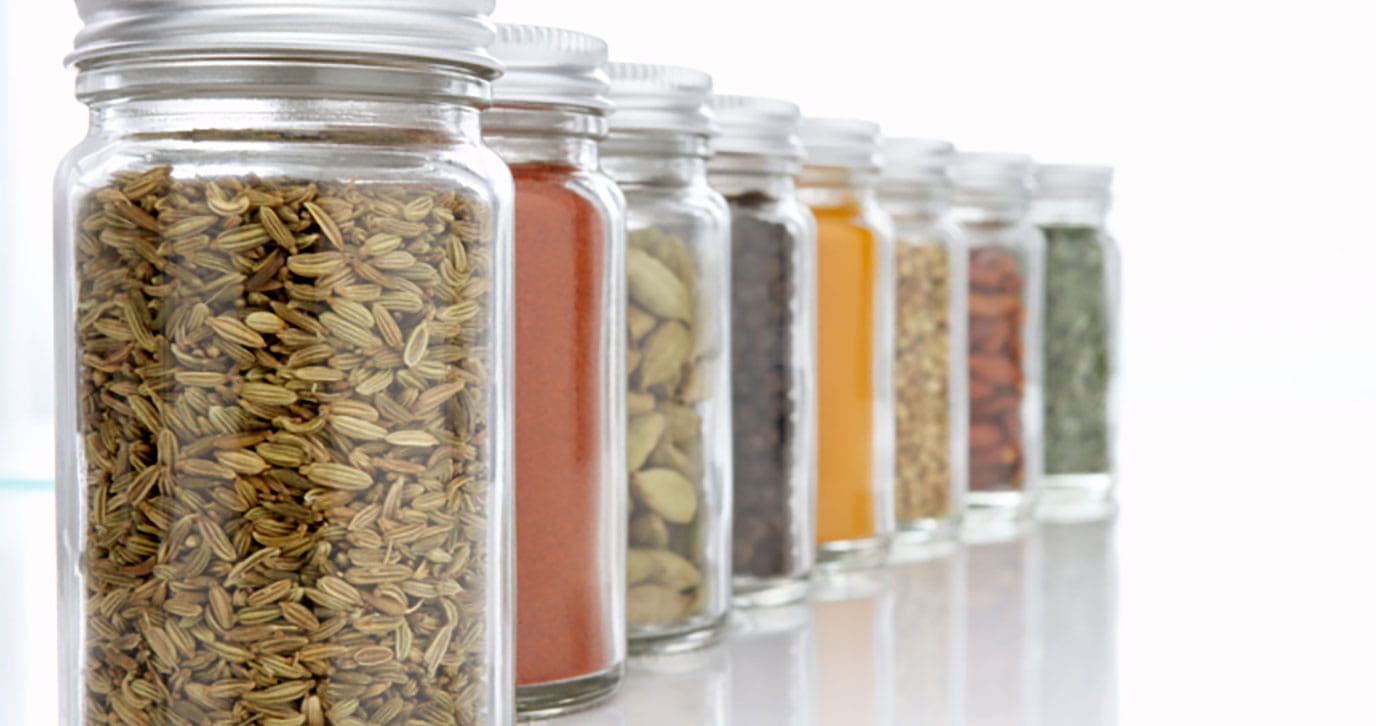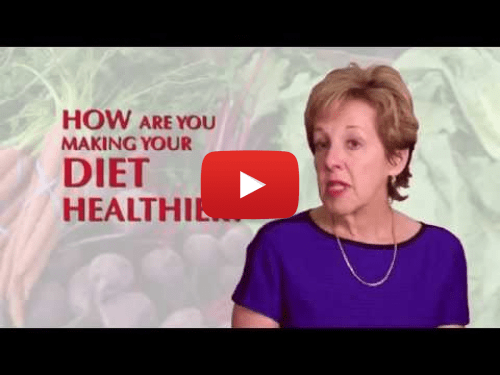Spices and herbs are complex mixtures of natural antioxidants, phytochemicals, vitamins, and minerals. They contain more than 2000 phytonutrients such as capsaicin (chili pepper), curcumin (turmeric), eugenol (cinnamon, clove, and nutmeg), gingerol (ginger), piperine (black pepper), rosmarinic acid (basil, rosemary, lemon balm), and thymol (thyme). Many of these compounds have antioxidant properties and contribute to the total antioxidant intake of usual diets, sometimes at even higher concentrations than fruits, berries, vegetables, and cereals. The in vitro antioxidant activity of various spices, herbs, and foods is shown in the Table.
Many experts believe that the use of spices and herbs in cooking and at the table should be encouraged, because many contain antioxidants that may help reduce oxidative stress. Oxidative stress is mediated by free radicals that promote the oxidation of cell lipids, DNA, and proteins and also activate inflammatory reactions, thus damaging cells and tissues. Oxidative stress is a characteristic of aging and most chronic diseases such as heart disease, cancer, obesity, diabetes, arthritis, and neurodegenerative diseases such as Parkinson disease and Alzheimer disease. The effects of oxidative stress may be lessened by eating a diet rich in naturally occurring antioxidants.
SPICE MIXTURE ADDED TO HAMBURGER DECREASED MDA FORMATION
Malondialdehyde (MDA) is a marker for the oxidation of lipids, which is a key step in the formation of atherosclerotic plaques associated with cardiovascular disease. A study was designed to test whether an antioxidant spice mixture would decrease MDA concentrations in cooked meat and in the plasma and urine of volunteers. Eleven healthy volunteers ate 2 kinds of hamburgers in random order: 1 burger was seasoned with salt and a spice blend that contained black pepper, garlic powder, ginger, ground cinnamon, ground cloves, oregano, paprika, and rosemary; the other was seasoned only with salt. Lipid oxidation in the cooked spiced hamburger was reduced 71% compared with the salt-only hamburger (P = .009). Among the volunteers, urinary MDA concentrations decreased by approximately 50% after they ate the spiced hamburger compared with when they ate the salt-only hamburger (P = .021). Postprandial plasma MDA increased significantly after consumption of the salt-only burger (P = .043) but showed a trend to decrease following consumption of the spiced burger. A time-trend analysis showed a significant difference (P = .013) between the two groups, suggesting the spice mixture helped decrease lipid oxidation.
SPICE MIXTURE ADDED TO HAMBURGER IMPROVED ENDOTHELIAL DYSFUNCTION
We also tested whether spices and herbs could reduce postprandial lipid oxidation and endothelial dysfunction in individuals with type 2 diabetes, a very common condition known to lead to endothelial dysfunction. Postprandial lipid oxidation refers to the susceptibility of lipids or fats to oxidation after eating a meal; it is an important area of research because humans eat throughout the day and seldom fast for long periods. Postprandial oxidation is associated with metabolic disturbances that contribute to inflammation and endothelial dysfunction.
Eighteen men with type 2 diabetes completed the protocol. They were assigned to eat in a random order a cooked hamburger seasoned with salt and a spice mix or a hamburger seasoned only with salt. The spice mix was the same as the one described previously. Urinary MDA excretion, urinary nitric oxide species (NOx) excretion, and peripheral arterial tonometry (PAT) were measured. (Nitric oxide plays a major role in maintaining vascular tone; increased urinary NOx excretion reflects an increase in nitric oxide formation, which improves vascular tone. Peripheral arterial tonometry is an indicator of endothelial function.) Urinary MDA excretion decreased significantly by 31% (P < .05), whereas urinary NOx excretion increased by 35% (P = .053), in volunteers who consumed the spiced hamburger compared with when they consumed the salt-only burger. The PAT scores decreased 9.7% in the group consuming the salt-only burger and increased 18% in the group consuming the spiced burger, even though their scores at baseline were similar (1.8 ± 0.6 in participants consuming the salt-only hamburger and 1.7 ± 0.4 in those consuming the spiced hamburger), as shown in the Figure. The PAT score for the spiced burger group indicated that consumption of a high-fat meal containing antioxidants found in spices and herbs increased postprandial vascular dilation in men with type 2 diabetes (P < .05). Together, these findings suggest improved endothelial function when the volunteers consumed a spiced hamburger.
CONCLUSION
Spices and herbs added to cooked hamburger meat reduced urinary and plasma markers of oxidation and improved postprandial vascular dilation. The effects demonstrated on lipid oxidation in healthy volunteers and on endothelial function in individuals with type 2 diabetes suggest that spice and herb mixtures added to cooked foods may provide potential cardiovascular benefits for people with diabetes.















